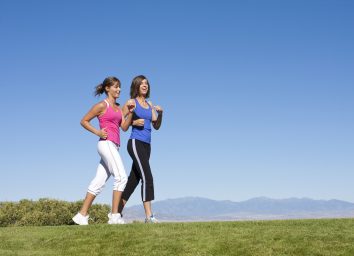The Surprising Exercise You Stop Doing After 60, Say Experts
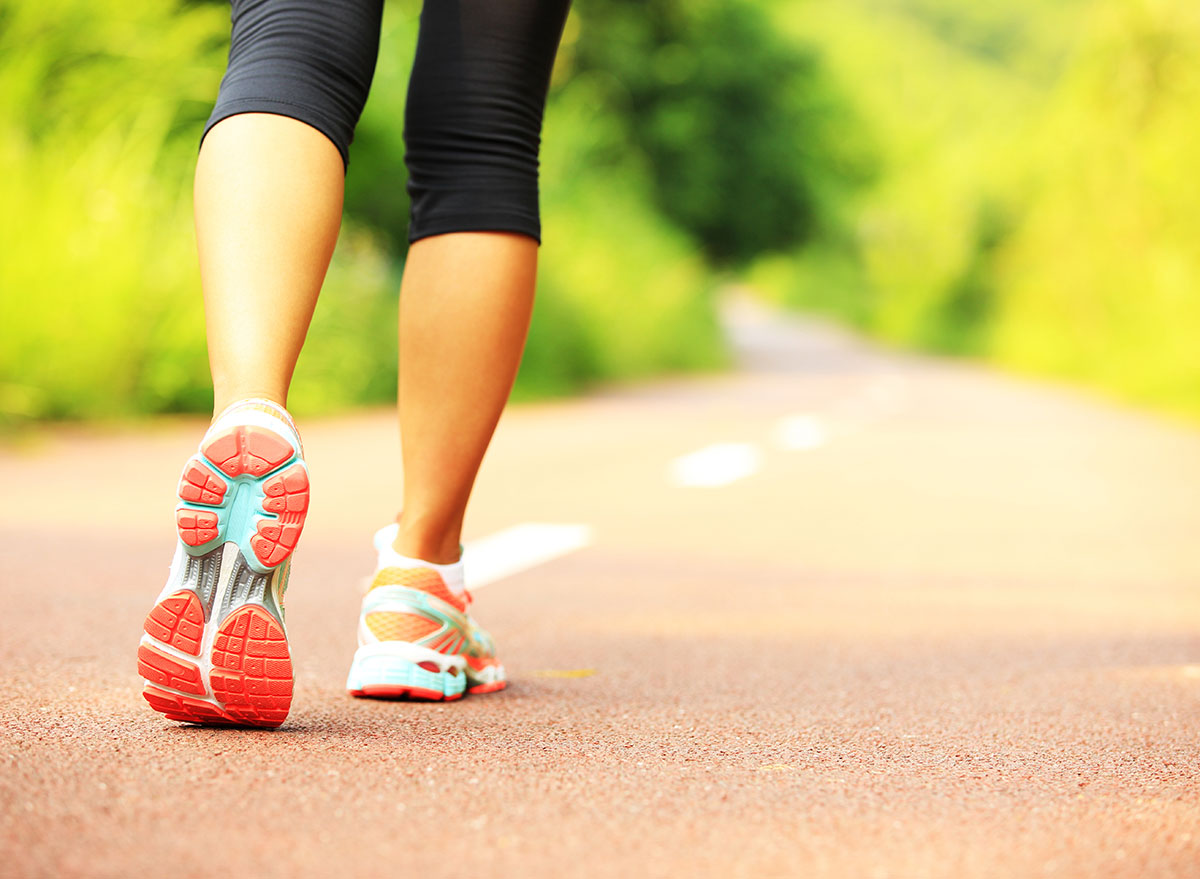
There are plenty of reasons to keep moving well beyond your 60th birthday. Regular exercise in old age helps preserve cognition, improve balance, and prevent bone loss—just to name a few perks. In fact, a recent study even reports that when we exercise, a specific hormone is released by the muscles into the bloodstream. From there, the hormone makes its way to the brain where it helps "supercharge" neurons, providing a serious brain boost. Researchers say one day the hormone may be developed as a form of Alzheimer's treatment.
With all of those benefits in mind, many older adults are inclined to hit the ground running with new and intense exercise routines and ideas. While intense workouts seven days a week are an admirable fitness idea in theory, it's also just as important for exercisers over 60 to work around their personal bodily limitations. For instance, the Mayo Clinic advises that older adults living with conditions including heart disease, arthritis, diabetes, or high blood pressure consult with their physician before starting a new workout regimen.
Besides speaking with a doctor, the exercises older adults choose to engage in should be carefully chosen as well. According to Leann Poston M.D., M.B.A., M.Ed., of Invigor Medical, seniors should prioritize exercises that strengthen bone density, improve balance, and add muscle mass. Moreover, it's super important to start slow. If an older individual is new to weightlifting they should "start with light weights or even soup cans and increase the weight as able," she explains.
There's another major form of exercise older adults beginning a new fitness chapter should consider avoiding—especially if it's something you're not well-conditioned to be doing—and it's sure to surprise many readers. Considered a pillar of personal fitness for a long, long time, this exercise can end up doing more harm than good for those over 60 looking to improve their health. Read on to learn more, and for more great exercise advice for people over 60, don't miss The Secret Tricks for Getting a Lean Body After 60, Say Experts.
Don't run really long distances—seriously
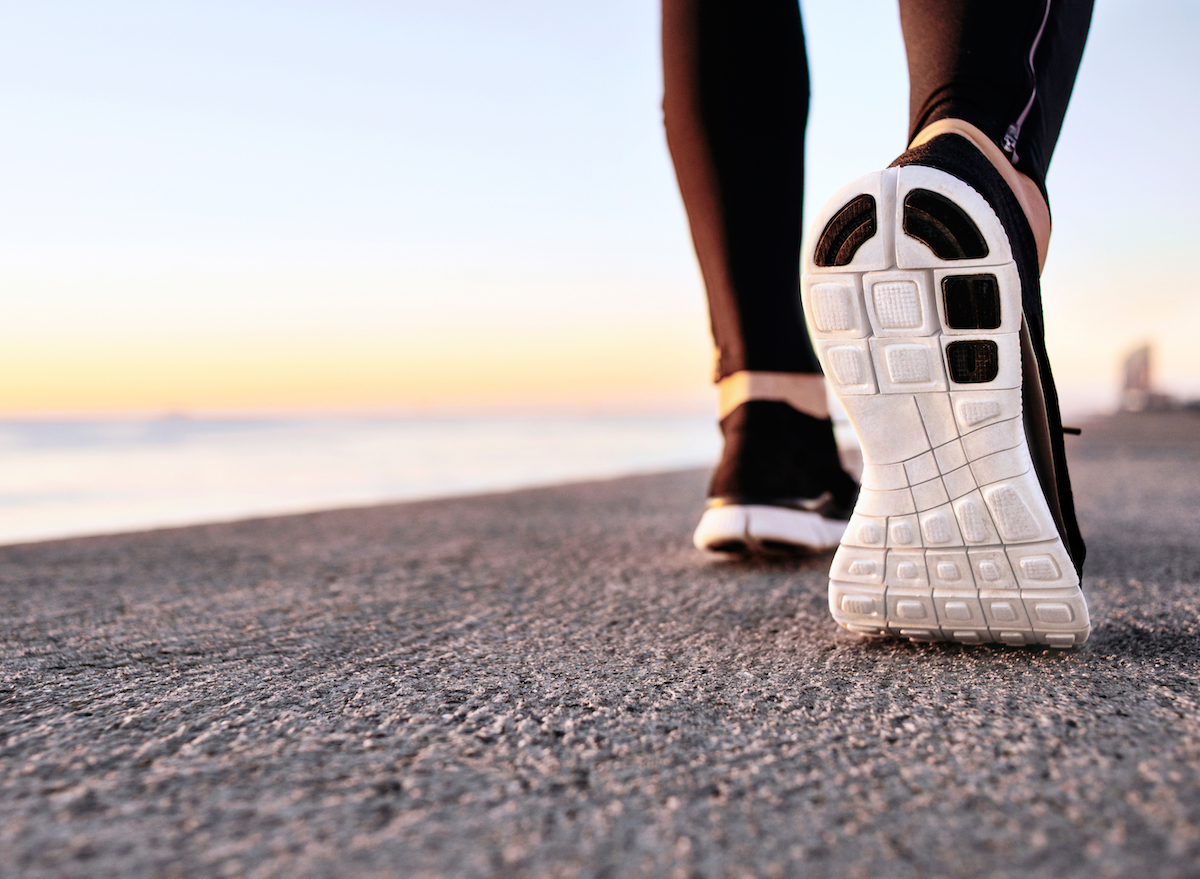
Exercise is supposed to make aging easier, not harder. Unfortunately, running places a whole lot of strain on the joints and bones—two bodily areas that are usually already hurting in many older adults. Osteoarthritis, or the deterioration of joint cartilage, is the most common form of arthritis in seniors—and running with osteoarthritis is known to cause increased joint pain.
"Injuries take longer to heal in older adults than young adults," Justus Ortega, a kinesiologist and director of the biomechanics lab at Humboldt State University, told U.S. News & World Report. "By running, you're exposing yourself to more risk of bone or muscle injury."
Steve Stonehouse, a USATF-Certified Run Coach and Director of Education for STRIDE, agrees—especially as it pertains to running first thing in the morning. "People in their older years may want to avoid running first thing in the morning, especially if they haven't always been a runner. That's not to say you can't train up to being a runner, but waking up and running on pavement without a lot of prior experience or properly warming up can have a lot of impact on your joints." Are you over 60? Make sure You're Not Making These Exercise Mistakes, Say Experts.
Walk instead
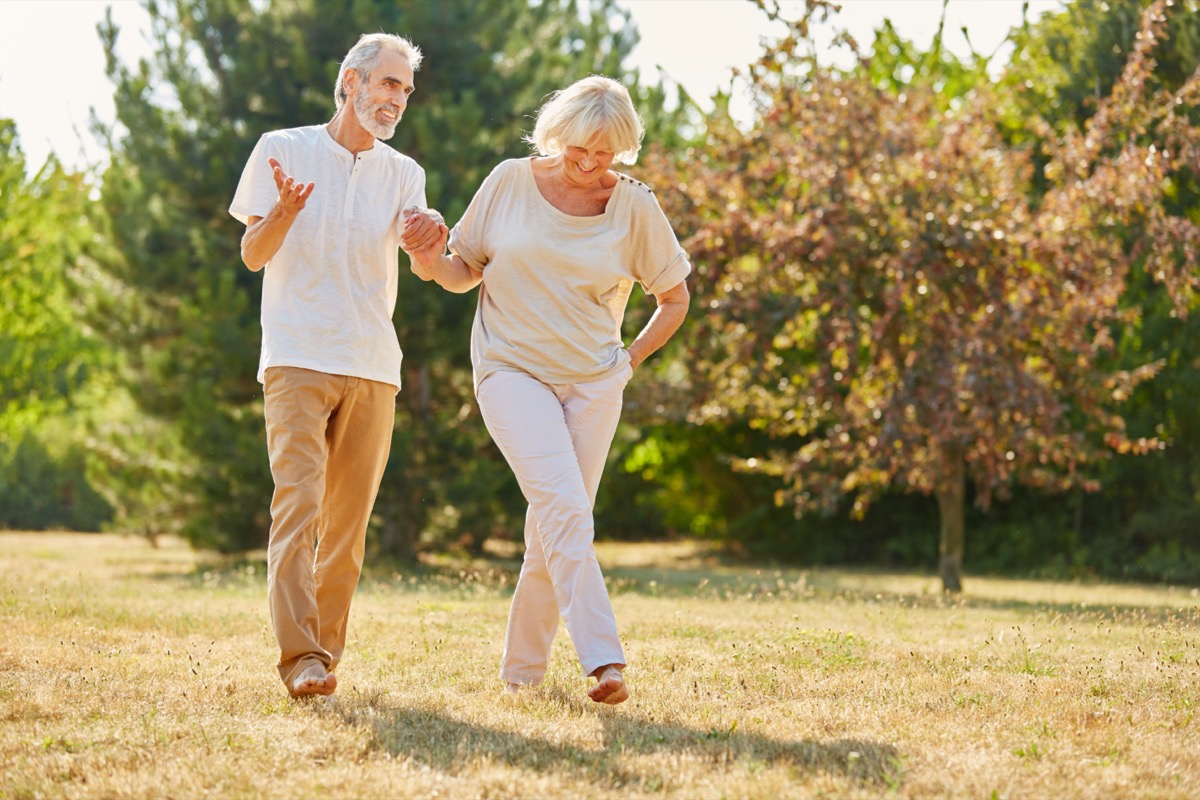
In lieu of a strenuous run, Stonehouse suggests older fitness beginners go for a walk or light jog instead. "Doing so on a treadmill can also help alleviate some of the impact of running outside," he adds.
Walking may not feel quite as much like an accomplishment as an intense run, but it's a much smarter "long-play" in terms of personal fitness, especially if you're brisk walking. You're much less likely to hurt yourself or strain something while walking, which makes it a better long-term option.
"Running may be superior in terms of time-management and weight loss, but many people find walking more comfortable, enjoyable, and thus more sustainable," Australian Olympian Jemima Montag, who won the gold medal at the 2018 Commonwealth Games and came in 6th in the Women's 20km Walk event at this year's Olympic Games in Tokyo, recently told ETNT Mind+Body. "Walking is associated with a lower risk of injury and, ultimately, going for an enjoyable walk every day is more productive than going for one hard run and being put off exercise for months."
Furthermore, former Olympic long-distance runner Jeff Galloway considers walking a superior all-around form of exercise than running. Why? Our bodies literally evolved to walk, not run. "According to a lot of research, our ancestors did very little running," he explains in a recent interview with Prevention. "We were mostly designed in evolution to be long-distance walkers."
A regular walking habit also promotes a longer life, robust heart health, and strong thinking skills in older adults.
Work your way up
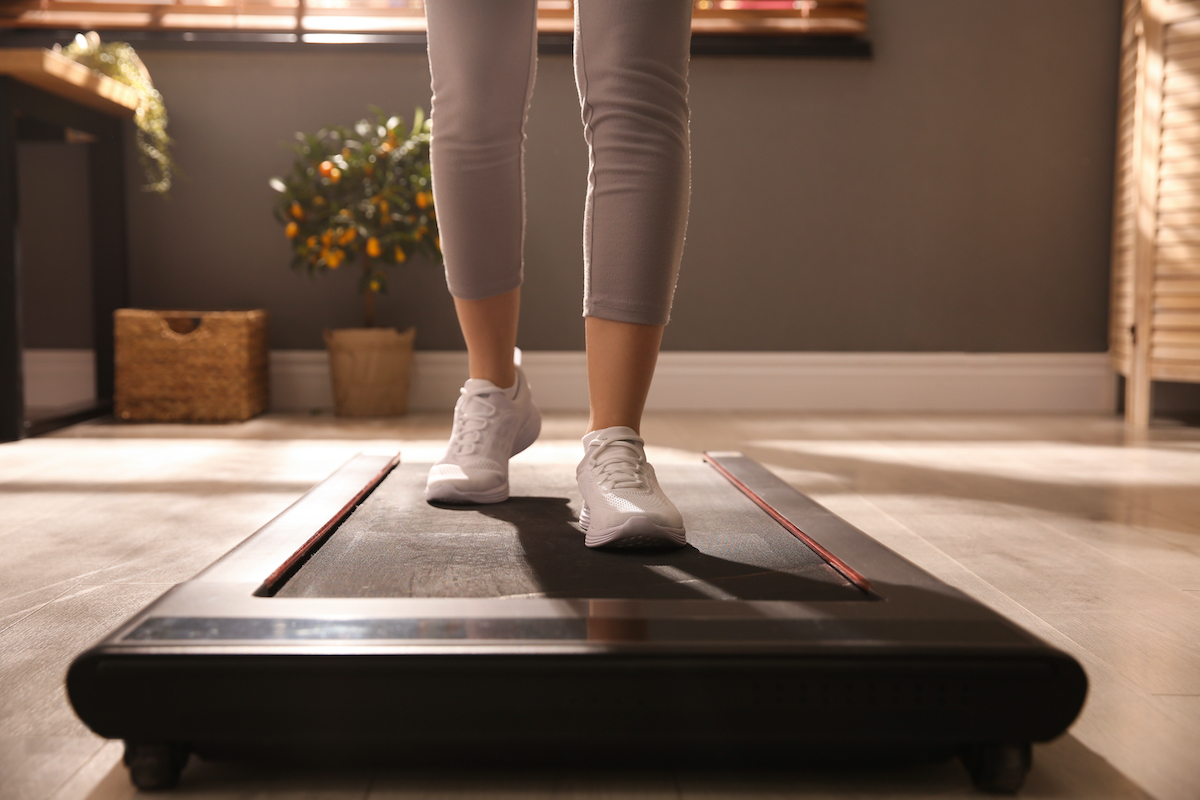
Running isn't always off limits for older adults. What's most important is working your way up to a solid runtime as opposed to sprinting right out of the gate. "Build your endurance and intensity over time. Work with a trainer if you can through a senior center or gym. Or join a walking or hiking group," Ortega explains. "If you get to a point where you feel like you want to try running, start in small increments and consult your physician before you start."
Additionally, older adults looking to start running may want to try doing so on a dirt surface over pavement. "Trails take away a lot of stress from the impact that you'd normally get running on harder surfaces," Scott Levin, M.D., a sports medicine expert and orthopedic surgeon, told Runner's World. "Some of the forces that would normally be transmitted from the pavement up to the ankles, knees, shins, and hips are dissipated when the foot hits the ground on the trails because there's some give there."
Also: Work on your calves
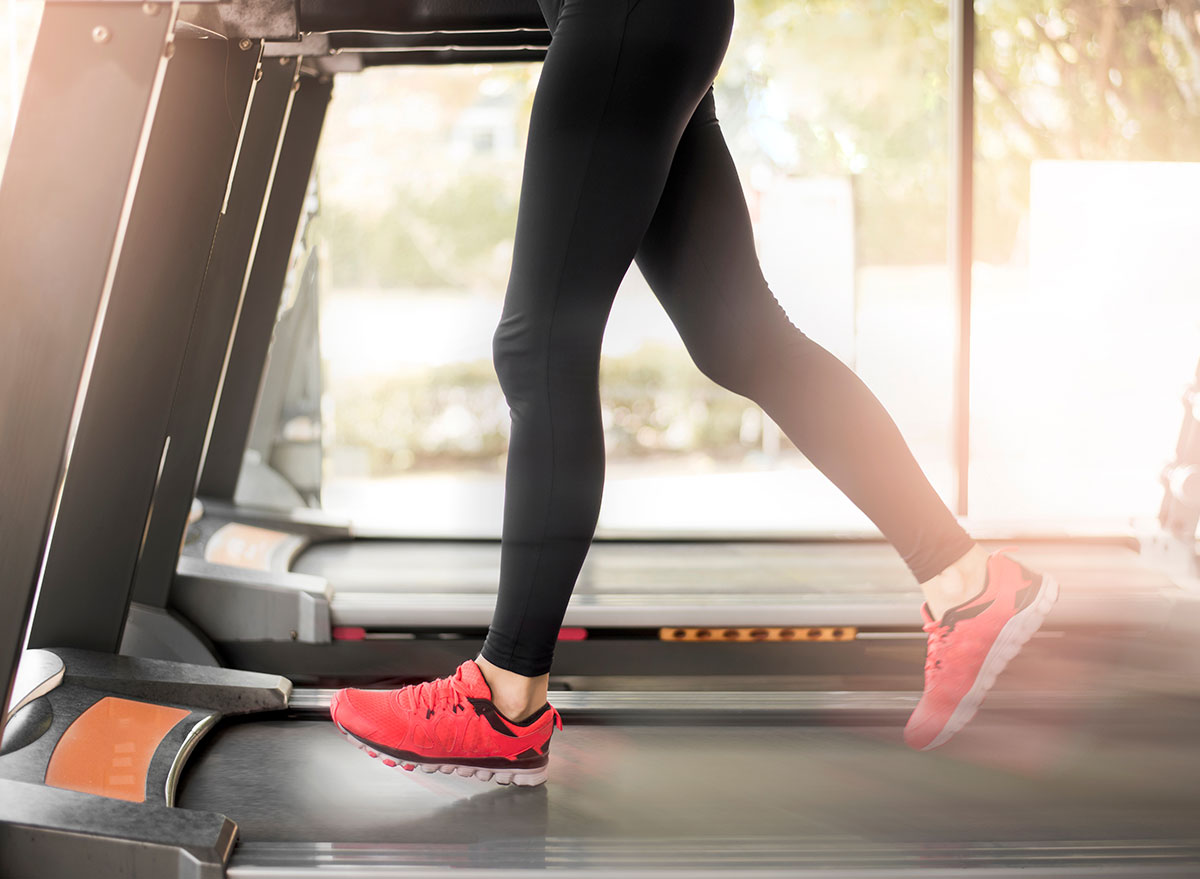
Mixing weak and tense calves with regular running is a recipe for disaster, and often leads to nasty injuries like calf pulls. When we run on weak calves it places too much pressure on the Achilles, which can lead to the breakdown of tendon fibers and eventual achilles tendonitis.
Before going for any walk or run, be sure to do some calf stretches. It's also a good idea to incorporate leg muscle strengthening exercises into your resistance workout routine. The most basic calf stretch consists of standing in front of a wall with one foot in front of the other while slightly bending the front knee. While keeping your back knee straight and your heel on the floor proceed to lean toward the wall. You should feel a noticeable stretch all along your calf muscles. Hold for about 30 seconds and then repeat on your other side. And for more great fitness advice, don't miss this One Life-Changing Exercise Trick for People Over 60, Say Experts.


